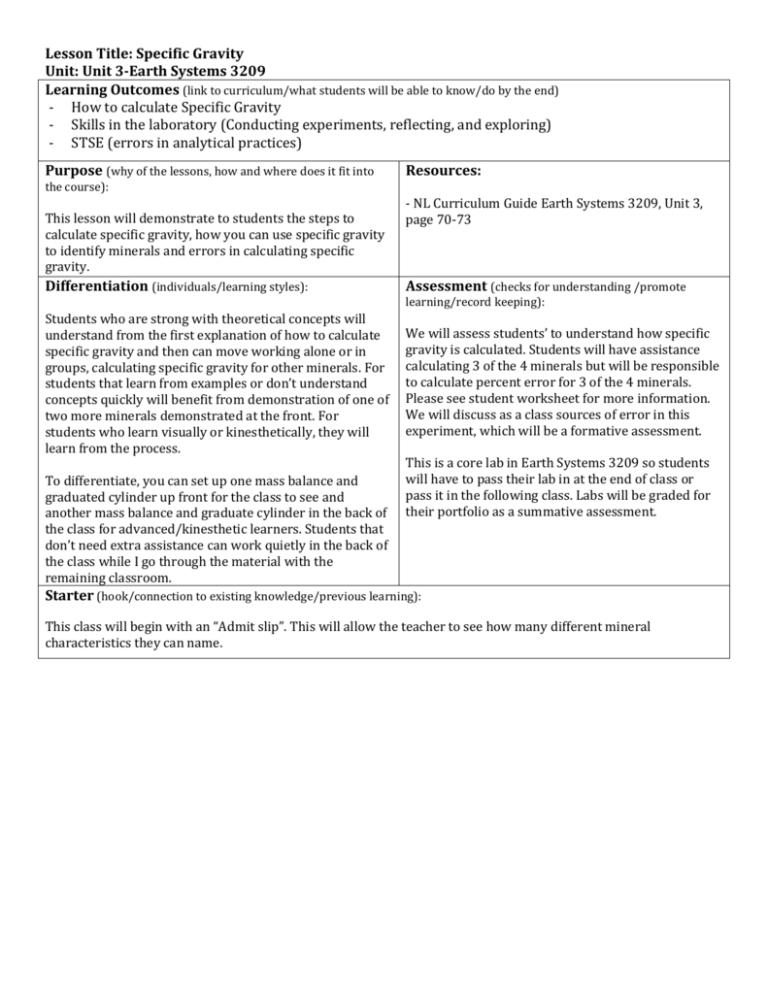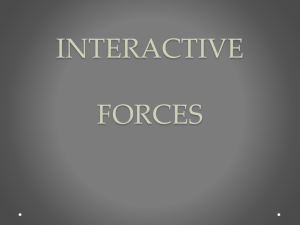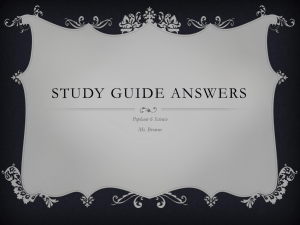Lesson Title: Specific Gravity Unit: Unit 3
advertisement

Lesson Title: Specific Gravity Unit: Unit 3-Earth Systems 3209 Learning Outcomes (link to curriculum/what students will be able to know/do by the end) - How to calculate Specific Gravity - Skills in the laboratory (Conducting experiments, reflecting, and exploring) - STSE (errors in analytical practices) Purpose (why of the lessons, how and where does it fit into the course): This lesson will demonstrate to students the steps to calculate specific gravity, how you can use specific gravity to identify minerals and errors in calculating specific gravity. Resources: - NL Curriculum Guide Earth Systems 3209, Unit 3, page 70-73 Differentiation (individuals/learning styles): Assessment (checks for understanding /promote Students who are strong with theoretical concepts will understand from the first explanation of how to calculate specific gravity and then can move working alone or in groups, calculating specific gravity for other minerals. For students that learn from examples or don’t understand concepts quickly will benefit from demonstration of one of two more minerals demonstrated at the front. For students who learn visually or kinesthetically, they will learn from the process. We will assess students’ to understand how specific gravity is calculated. Students will have assistance calculating 3 of the 4 minerals but will be responsible to calculate percent error for 3 of the 4 minerals. Please see student worksheet for more information. We will discuss as a class sources of error in this experiment, which will be a formative assessment. To differentiate, you can set up one mass balance and graduated cylinder up front for the class to see and another mass balance and graduate cylinder in the back of the class for advanced/kinesthetic learners. Students that don’t need extra assistance can work quietly in the back of the class while I go through the material with the remaining classroom. learning/record keeping): This is a core lab in Earth Systems 3209 so students will have to pass their lab in at the end of class or pass it in the following class. Labs will be graded for their portfolio as a summative assessment. Starter (hook/connection to existing knowledge/previous learning): This class will begin with an “Admit slip”. This will allow the teacher to see how many different mineral characteristics they can name. Lesson Title: Specific Gravity Unit: Unit 3-Earth Systems 3209 Running Teacher Doing Time Students Doing Pass out Admit slip. Give students 2 minutes to complete and ask for them to return them. Discuss as a class the variety of ways to classify minerals. Introduce specific gravity as another way to classify minerals. Students write the mineral characteristics they remember. Students will be patiently waiting for distribution of sheets until Jake begins his lecture. Pass out Specific Gravity Worksheet. Walk students through how to calculate specific gravity on the first page. Draw table of data on board and bring presentation up on Smart/Team Board. Go through steps of calculating specific gravity with students slowly including calculating percent error. You can ask for a student volunteer to help with each mineral. Once the first run through of Specific Gravity is complete, you can invite the students to calculate the specific gravity at the other station in the room. If students feel comfortable you can just help them calculate or you can continue lecturing. Students will receive worksheet. Read through procedure on front page. Write out values 7-10 Mins Ask students for the masses they received and volume displaced for each mineral and complete table on the board. Ask them for their calculated specific gravity and percent error. Percent errors can be as high as 50%. Have a discussion about various sources of error within this experiment. Time is given to complete specific gravity and percent error calculations. Students can then complete the sources of error question on the sheet. There will be time given for any remaining questions. 2-5 Mins Go through a common specific gravity question that can be found on quizzes, unit tests or exams. Students answer question given. 3-6 Mins Buffer time: if the lecture or the lab component takes extra time. Remind students to pass in a completed lab report or have it prepared for next class. Clean up stations in laboratory, put away minerals. Take a picture of data calculated on the board for any students that missed the lab. 3 Mins 2 Mins 15-20 Mins 20 Mins Students continue calculating specific gravity and percent error for 3 other minerals. They can work in groups or individually.








